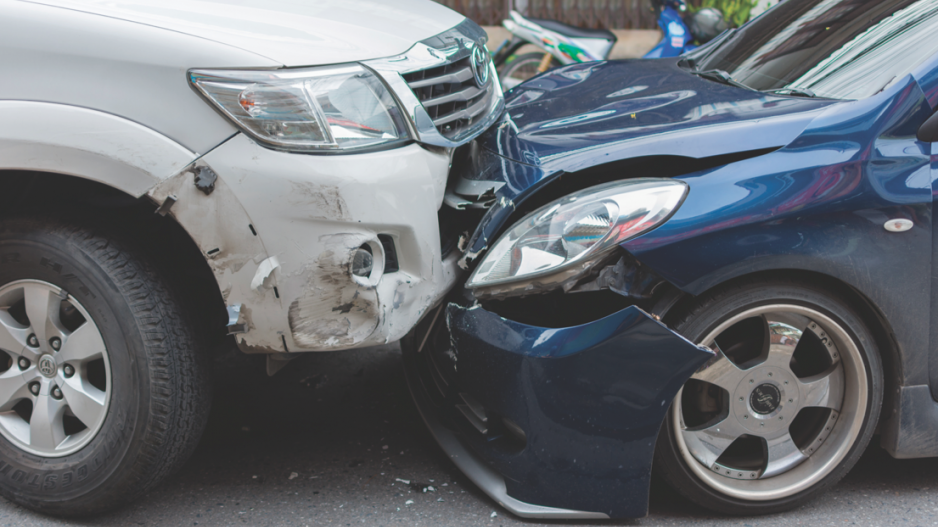Later this week, the Insurance Corp. of British Columbia (ICBC) will submit its revenue requirements to the BC Utilities Commission (BCUC). But B.C. motorists already know that the former will be seeking permission to increase the average car insurance bill by $130 a year.
The hike was previewed last week by Attorney General David Eby, who is also minister responsible for ICBC.
Eby announced ICBC would be seeking a 6.4% increase to the basic insurance rates, plus increases to the optional rates, starting at 3.1% in the first quarter, with further quarterly increases of 2.2% to a maximum of 9.6%.
The blended rate is 8%, which would increase the average motorist’s car insurance by $130 per year.
Eby also announced ICBC would be instructed to increase activation of red-light cameras from six to 24 hours a day, and introduce a pilot project that will use technology to restrict the use of mobile phones by drivers.
His government also put ICBC on notice that it will face an audit of its operations and practices in an attempt to try to fix a growing structural deficit.
“I’m assuming responsibility for getting ICBC back on the right track,” Eby vowed. “We will fix this problem.”
But Eby has already ruled out one change that could go some way to addressing ICBC’s problems – moving to no-fault insurance, which is at least partly the reason why Saskatchewan has some of the lowest auto insurance rates in the country.
While the BCUC could conceivably reject the basic rate increase and recommend something lower, James Brander, a professor at the University of British Columbia’s Sauder School of Business, doesn’t think that is likely to happen.
As he pointed out, the rate hikes announced last week are a fraction of what ICBC actually needs to close a funding shortfall of $454 million. A 20% hike is actually needed. Even with an 8% blended rate hike, ICBC’s losses for next year are projected to be $360 million, so anything less than 8% would only postpone ICBC’s pending financial crisis.
“Last year alone ICBC lost more than half a billion dollars in just 12 months,” Eby said. “That loss is the largest loss in ICBC’s history. ICBC’s annual losses, if no changes are made, are projected to increase to almost $1 billion in the next three years if we don’t take action now.”
Eby heaped blame for ICBC’s growing deficit on the previous Liberal government, which required ICBC to pay $1.2 billion in dividends to the government between 2010 and 2016.
An EY report commissioned by the previous government showed that the revenue ICBC brings in from car insurance does not come close to covering the costs of accident claims, which have spiked in recent years.
Eby suggested that spike appears to have been, at least in part, artificially created. In a cost-cutting exercise in 2012, ICBC took a more litigious approach. Instead of automatically paying out what Eby called “legitimate claims,” it fought them in court.
“This meant that ICBC’s claims costs were reduced in the short term, but in the long term there was a significant and growing backlog of claims that now has come home to roost and must be paid,” Eby said.
“This backlog of unpaid claims is part of the explanation of a sudden spike in claims costs.”
While Brander agreed the deferred claims payouts are now bunching up, he said it’s no mirage that the number of car accidents in Metro Vancouver has soared in recent years and said Vancouver’s traffic congestion problem is largely to blame.
“It is true that some of the costs we’re seeing now are delayed litigation costs, but it’s not true that it’s just a spike,” he said. “It appears to be permanent, unless the government does something.”
In other words, if the NDP government is serious about addressing ICBC’s structural problem, it has to fix Metro Vancouver’s gridlock problem.
Eby announced plans to conduct an audit of ICBC’s operations and practices to try to identify savings and efficiencies – a move slammed by BC Green Party Leader Andrew Weaver.
“We already have an evidence-based, taxpayer-funded report with proposals for reforms,” Weaver said, referring to a 195-page EY report commissioned by the previous government and ICBC board of directors.
Key reforms recommended in that report included reintroducing photo radar and moving to no-fault insurance. Eby dismissed both recommendations out of hand.
Pointing to the EY report, Weaver said no-fault insurance would reduce average vehicle insurance premiums in B.C. by $630 by 2019 – a 13% reduction.
“The current system is overly litigious and adversarial,” Weaver said.
“Payouts for minor bodily injuries have increased 365% since 2000. Every other public insurance system in Canada either limits certain types of claims or operates as a no-fault model.”
No-fault insurance may be one of the reasons car insurance rates in Saskatchewan and Quebec are so low.
Like B.C., Saskatchewan and Quebec have public auto insurance corporations. They also have no-fault insurance and have some of the lowest auto insurance premiums in Canada: nearly half what they are in B.C.
The average premium is $1,316 in B.C., $775 in Saskatchewan and $724 in Quebec, according to an April 2017 report by David Marshall for the Government of Ontario, which has private insurance, and the highest car insurance premiums in Canada. •




